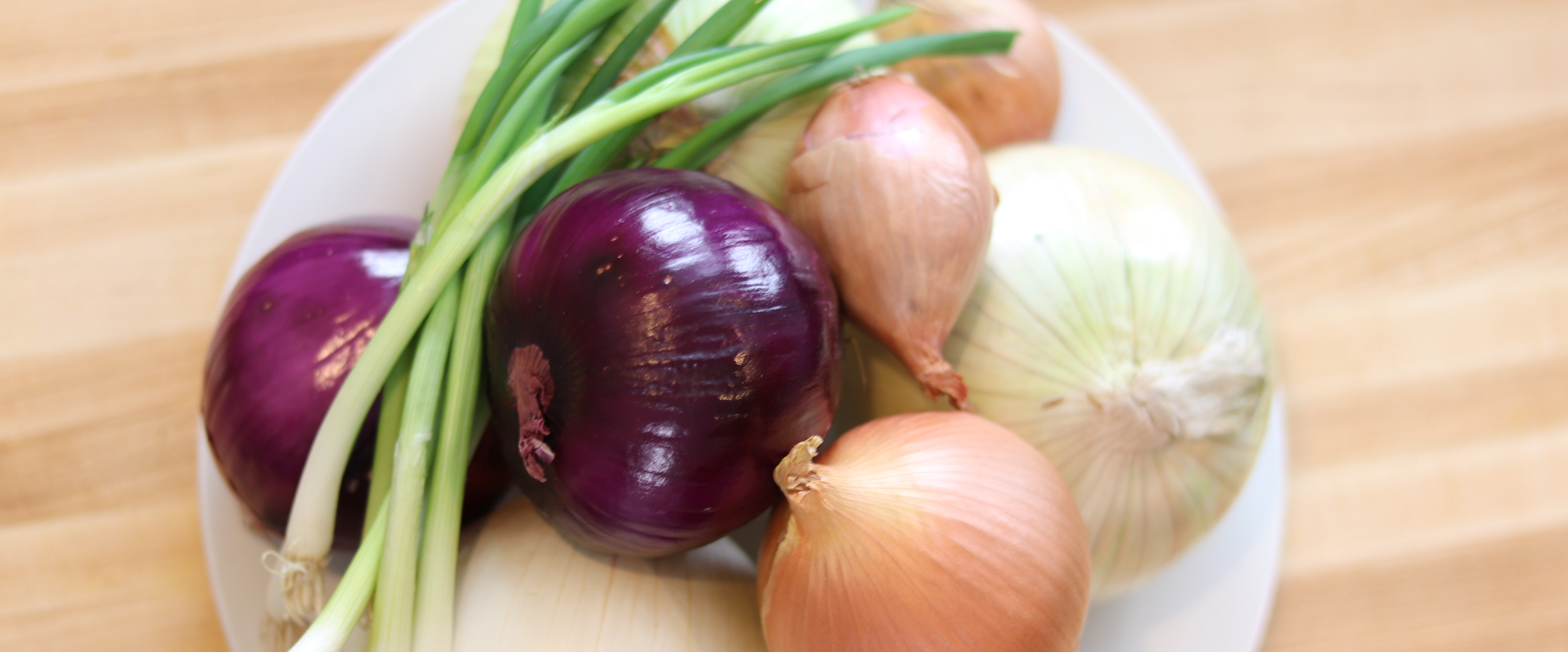
How to Cut an Onion
Science Behind the Tears
Onions contain naturally occurring amino acids called sulfoxides, and when you cut into an onion, their cell walls become damaged, converting the sulfoxides into a gas. The gas travels into your eyes, producing tears.
There are so many tricks floating around about how to reduce tears when cutting into an onion. Most don’t work and are just plain silly. But there are a few things you can do that will help; first you need to work as quickly as you can so the gases do not have time to reach your eyes in the first place. Also, be sure to use a very sharp knife to minimize damage to the cells, and slice instead of squash. And lastly, do not cut off the root end, it is said that the majority of the gases are trapped in this section.
Do not Cut the Root
Your going to need a sharp knife and a sturdy cutting board, I am using my classic 6 inch Wustoff chef's knife and a Kobi Blocks Maple Edge Grain Butcher Block Wood Cutting Board. So first, we need to cut off the top half of the onion, NOT the root, because remember that's where the majority of those gassed are held.
Next, cut the onion in half to give you two flat surfaces. Yes, we cut the root, but only once and remember we have a very sharp knife. Now, we can remove the papery brown skin.
Slice and dice
There is no way I am cutting this thing like Marco Pierre White, I really like my fingers thank you very much.I am on team Gordon Ramsay on this one and will cut my onions the Catering School way, without the blood.
We are going to do a dice, so first you want to slice across 2 or 3 times, be very careful, it will be easy to slip and cut yourself while doing this. Then, curl your fingers back and with a rocking motion cut across to make the dice. Cut all the way down, but not thru, the root.
And that’s it, it’s the same with the shallot but on a smaller scale. If you want to slice the onion and get long strips for fajitas or salads. You do the same except instead of cutting across, you just slice straight across. And that’s it.
Types of Onions
Onions are from the Lily family of plants, they are an edible bulb and are categorized as being either green or dry (mature). Green onions are harvested before the bulbs have matured, when they are small and the tops are green and edible.
But today we are going to talk about dry or mature onions that are harvested when the the leaves have dried and the skin has become papery. There are two types of dry onions; fresh and storage.
Fresh have a higher moisture content and are sweeter but last half as long as storage onions. The Maui and the Vidalia are two varieties of popular fresh onions and are best used raw like on burgers or lightly cooked maybe in a quick stir fry.
Storage onions have a more intense flavor and, if stored in a cool dry place, can last much longer than fresh onions. Red, Spanish, White, Yellow and Shallots are all varieties of storage onions. Storage onions are best used in dishes that have a longer cooking time and their low moisture content means they do well in oil for frying or sauteing, soups and stews.
Hopefully you made it through without shedding a tear and next time you try to cut an onion it won't be so dramatic, just remember to work fast, use a sharp knife and keep that root end in tact.
